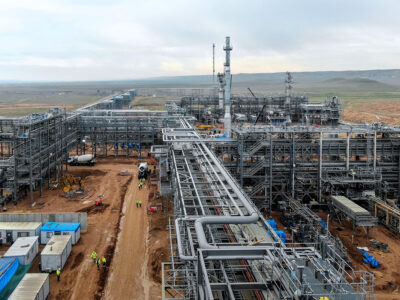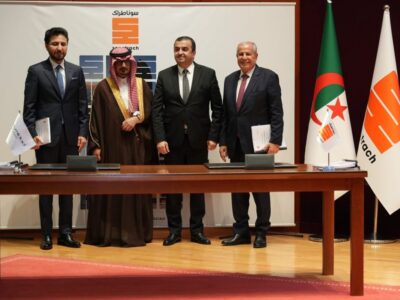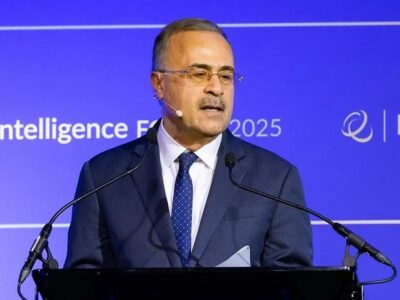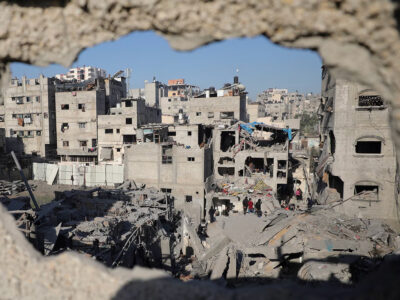Few things are more desired by governments than economic
growth. Recent history has been kind to Bahrain’s rulers, who reign over a
country attested the fastest economic growth in the Arab world by the UN in
2006.
In the Middle East, a
mushrooming GDP is usually associated with corresponding population and
infrastructure growth, which has led to the maddening increase in demand for
water and power across the GCC.
Dr. Abdulmajeed Ali Alawadhi, CEO of the Electricity and
Water Authority (EWA), is only too aware of the flipsides of development, which
has remained brisk in spite adverse conditions. Far from abating during the
turbulent years of the global economic crisis, demand for electricity and water
has actually risen.
Water consumption in Bahrain increased by around 3.5
percent per annum in the period from 1999 to 2004, and electricity usage by
around six percent in the same period, he says.
After 2004, demand for water surged to an average of 6 percent per
annum. In 2010, the peak load, the time of day in the summer months during
which power consumption is highest, increased by 11 percent.
Alawadhi ascribes this rise to the boom in the construction
industry, which necessitates a large workforce. This, together with Bahrain’s
emerging status as a regional financial hub, has pushed the island’s population
to around 1.15 million.
Such figures do not allow for thumb twiddling, and EWA has
been busying itself with ensuring a sufficient power and water supply since its
formation as a separate entity from the Ministry for Electricity and Water in
2007. And in spite of ever increasing hunger for power and thirst for water,
the authority has been successful in matching demand with supply.
Current generation capacity stands at 3,150MW, says the CEO,
which will increase to almost 4,000MW once the Al Dur independent water and
power project (IWPP) is completed in June. Peak demand stands at
1,708MW, a comfortable level even with the 300MW buffer zone the authority
maintains. According to EWA figures, generation capacity has remained ahead of
the peak load throughout the year.
The situation also looks healthy on the water side, where
the production of desalinated water is due to rise to 48 million gallons per
day.
“The supply of
electricity and water will be satisfactory from 2011 to 2014 for the growth in Bahrain,” says
Alawadhi, who points out that power generation and desalination are not the
only task at hand: “Along with this we are building water and electricity
transmission systems, additional storage tanks, pumping stations and chemical
treatment facilities for the water.”
To build this infrastructure, EWA has allocated a total of
500 million dinar (around US$1,33 billion) over the next three years. Of this
320 million dinars will go into upgrading the electrical
transmission and distribution (T&D) grid, while 180 million dinar will be
invested into the water distribution system.
The authority has already awarded most of the contracts for
those projects, and has put out tenders for the remainder.
“For the electricity projects, all contracts have been
awarded. For water a few of them have been awarded, and the rest will be
awarded in the coming three to four months maximum. They are in the tender
stage, and a lot of those tenders are in the evaluation stage,” says Alawadhi.
With the Al Dur IWPP covering demand growth in the near
future, the next power project is still some way off, says the CEO, with the
planning stage to commence in two years time.
Private power
Public private partnerships (PPPs) have become common in the
region’s power generation sector. But few countries have embraced the
independent power project (IPP) model as comprehensively as Bahrain, which
has sold off all sellable assets, and has committed itself to the private
sector for future projects.
The kingdom is already host to three IPP and IWPPs: The Al
Ezzel IPP, which has a capacity of 950MW, the Al Hidd IWPP, which contributes
around 1,000MW to the grid, and the uncompleted
Al Dur plant.
Perhaps more so than any other plant, Hidd exemplifies Bahrain’s
privatisation drive. Built in the late 1990s, the project was sold off to a
consortium around Suez-Tractebel and Sumitomo in 2005.
The only generation capacity now left in EWA’s ownership is
the ageing Al Rifa’a plant and the Sitra peaker plant, neither of which
attracted buying interest.
Alawadhi is clear about the prime benefit of PPPs: “The main
reason for that is the total amount of money that is required to build a
project. It’s a little different than borrowing money by ourselves and building
it.”
Avoiding upfront costs and high debt levels comes at a
price, as utilities have to provide private companies with a profitable
business model, which includes cheap feedstock and offtake agreements with
attractive rates for power
and water.
The IPP model thus has its financial drawbacks, and Alawadhi
feels that this is exacerbated by a lack of completion amongst private
players able to build, own and operate plants:
“If I had the money, I would build the power station myself
but I would not run it. There are plenty of companies around the world running
plants, and if I put in a tender 10 to 15 companies would come in, and it would be fair
and good competition. But if tender for an IPP, not more than three can do
that. Others don’t have that finance, so there are only three consortia playing
around this area.”
Mixing it up
With the region experiencing a shortage of natural gas, the
primary feedstock for power generation, and as governments are waking up to the
fact that fossil fuels could be sold in the international markets rather than
being frittered away at home, the talk of alternative sources of energy has
become louder.
Alawadhi is not oblivious to this. Like Abu
Dhabi, which aims to produce seven percent of its energy from
renewable energy by 2020, Bahrain
is out to reduce its carbon footprint. “We have a 2030 target, we would like to
be like developed countries that have a minimum of five percent for the
production of renewables,” says Alawahdi.
To this end, a commission for renewable energy was set up
last year, which is headed by EWA, and includes representatives from the
Ministry of Industry and Bahrain’s
national oil company BAPCO amongst others.
The first significant project on the table is a 3-5 MW
project combining solar and wind power. EWA is currently tendering for a
project consultant, with the contract likely to be awarded in January.
“The consultant will need at least six months to prepare the
document, so we are expecting to launch a tender for a contractor in mid-2011
or in the third quarter.”
EWA is also already undertaking a number pilot and research
projects. One of these involves harnessing the downwards energy of the cranes
in Bahrain’s
harbour, each of which is capable of contributing 1MW of power into the grid.
Like all GCC countries, Bahrain
signed a contract with US
consultancy Lighthouse, which will assess the feasibility of nuclear power in
each individual country. Alawadhi
believes the size of Bahrain
might preclude a power plant on the island, but does not feel that the country
needs to be excluded from the regions nuclear drive: “One day we could be
purchasing nuclear power available from the GCC, and maybe be shareholder on a
plant as well.”
This is made possible by the grid connection between the GCC
countries through the GCC grid, which already connects Bahrain to Saudi
Arabia, Qatar
and Kuwait, and will expand
to include the UAE in 2011, and Oman
by 2013.
Grid unlocked
Interconnection also makes possible a regional energy
market, and Alawadhi is positive that such a market is not far from becoming
reality. Already, 200 exchanges have been made between GCC countries since
connection was established in June 2009. The CEO stresses the need for the
electricity supply to be reliable, which requires a hosting country to allow
IPPs to sell to its neighbours. Such transfers are to the benefit of everyone,
he believes. “Its in my interest, I am not loosing here, I might gain. Why not
allow an IPP in Bahrain
in winter to sell electricity to someone else?” he asks.
Consequently, a fully liberalised market is not far off: “I
am notlooking forward more than 5 years.”
The implications of grid connection are mouth watering for
regional utilities, as connection to Arab states outside the GCC, such as Egypt, is not
far off. Even the link to Europe will be
completed within the next decade, believes Alawahdi.
“In five years, we will have our grid linked to the Arab
grids. The Saudi – Egypt
grid is going on these days, so I’m quite sure there will be a link very soon.
And there will also be a link to Europe by 2020, I’m quite sure the Middle East
and Europe will be linked. So we’ll be able
sell to them in winter, and they’ll sell to us in summer,” he says.
Curbing consumption
Making sure that supply keeps abreast with spiraling consumption
is one way to keeping the lights on and the tabs running. But EWA is not alone
in realising that discouraging waste is another crucial piece in the puzzle.
Middle Eastern governments are hesitant to raise tariffs for electricity and
water, which is highly subsidised, and Bahrain is no exception. But Alawadhi joins a chorus of regional utility heads
calling for an increase in tariffs.
“If you ask me, I’d say definitely, tariffs have to be
changed,” he says. “Eighty percent of a conservation programme is tariff. Hit
the pocket, and everything will go well.”
But tariffs are not within EWA’s remit, meaning that
Alawahdi is limited to working on the remaining 20 percent, which include
“educating people, using different equipment, encouraging the use of different
equipment.”
Wastage also occurs through leaks in the transmission
systems, and EWA is working hard to decrease the amount of leakage, according
to the CEO. Currently, 18 percent of water channeled through Bahrain’s
T&D infrastructure is lost. Too much, believes Alawadhi, who is committed
to bringing down this percentage to the 10 percent that developed countries set
as their targets.
“We have a plan to bring it down to 10 percent in five
years. Some people might say 10 percent is still too much, but it will be more
expensive to bring it down
further.”
To this end, the authority is focusing on substituting
ageing pipes with piping made with different materials, as well as tightening
connection areas, he says. EWA is also carrying out repairs to piping in
residences, picking up the tab in return for lower losses.
Smartening up
Feeding into the efforts to reduce waste, and pave the way
for a different tariff structure, is a move towards a smarter grid. Smart
meters, which transfer information on consumption almost in real time, are a
vital component of a smart grid, and EWA has already started the roll out.
“In 2010 we started working on a smart grid. We are starting
to change electricity and water meters, because when the smart grid comes, we
don’t have to purchase new meters,” says Alawadhi. The authority has begun
installing digitalised meters on for electricity, and is currently running
tests to determine the most suitable meters for water, he specifies.
But a smart grid is not restricted to a smart meter, the CEO
points out, and more intelligence is required at other stages of the grid to
reduce losses and improve the information flow.
“The smart grid is not only smart metering, it also includes
transmission and distribution, and it can tell me where losses are high,
whether it is in the transformer, or the cable, and whether I should change the
material.”
Smart grids also give utilities more control over the
consumption of customers, so enabling them to reduce usage remotely.
“With smart meters you can do the load shedding from the
control room, you can cut half the consumption of a house, or all of it, if you
want to do that during the peak loads,” says Alwadhi.
The CEO seems genuinely concerned about reducing the
environmental impact of his remit, and this extends to his view on
emissions.
“Emissions reduction is very important for our future
generations,” he says.
Apart from mandating high efficiency levels for power
plants, which reduce feedstock needs, EWA also has stringent limits for the emission
of greenhouse gasses. Nitrogen (di)oxide
(NOX) emission levels are under the 50 particles per million (ppm) threshold
called for by international
standards. The majority of plants emit only around 30ppm, says
Alawadhi.
He also points to the importance capturing the other harmful
gas, Co2. Unfortunately, capturing and reusing this gas necessitates the
cooperation of industry, which have so far shied away due to
cost reasons.
“In the GCC we told industry to do it, but they don’t do it
yet because its too expensive. They need someone to pay them, or subsidise the
capturing of Co2. That requires legislation,” says
Alawahdi.
Whatever the progress made in this, or other areas, the CEO
does not give the impression that Bahrain will be left straggling.








